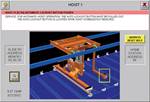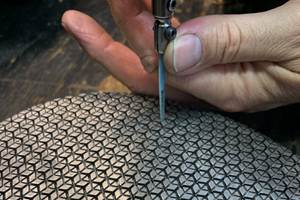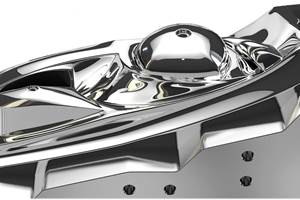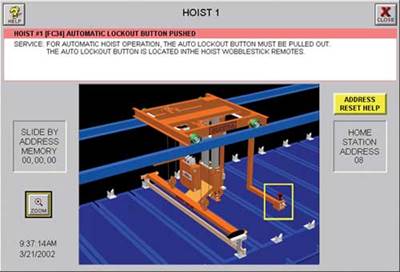Plating Tips for Better Productivity
The true differences between types of plating and why one may be better than another for efficient, quality production.
Plating can be tricky. Everyone uses one form of plating or another, but do you know the true differences between types of plating and why one may be better than another for efficient, quality production? And what if welding is required? Can you combine various forms of plating for optimum effect? This article will address all of these questions and more.
It is helpful to have a good, overall picture of plating and its various characteristics. It also is a fact that, since you yourself will not perform the plating services, the most important initial step is to find a reputable plating company that knows its craft. A good plating house can perform any number of specialized plating and related services and avoid causing detrimental effects to your mold. Of course, a good plating operation also should be able to tell you up front what the proper plating materials are for your needs. You will know that they have your best interests in mind because you are about to learn how to choose the correct coatings for some of the more common molding applications.
What Is Actually Platable?
There are numerous materials that can be coated with varying plating material. They include any tool steel, all stainless steels, beryllium, aluminum, carbide, brass, copper and pre-hardened steel such as the commonly used P-20 variety. Almost anything is platable if you know what you are working with. One thing to keep in mind is temperature. All coatings in this article are applied at below 200xF. By using these low temperatures there is no concern with drawing down hardness or distorting the tool.
Another important fact is that it is possible to effectively plate over welds. Again, the key is to know your plating vendor's capability level. A lot of platers can plate but not strip that plating to prep a mold for repair, for example. Welding should never be done over coatings; you're just asking for more problems down the road. So make sure your plater can strip plating without any detrimental results.
Another useful tip pertains to plating on an angle surface on the inside diameter of a stripper ring to eliminate flashing plastic. We recommend micro welding the sharp edge prior to chrome plating. After grinding the inside diameter and top surface, the fact that the corner is steel assures that there will be no exposed chrome edge that is susceptible to chipping. It's a very effective technique and can save you time and money in the long run.
More Plating Tips
There are many, many plating tips and secrets of the trade that one learns throughout the years. You may have heard some of these, but following are a few key pointers to keep in mind. They could save you a lot of time and aggravation down the road.
Avoid using chrome when molding with polyvinylchloride (PVC). Chloride is a component used to strip chrome off of steel; therefore the chrome will slowly dissolve due to the gases emitted from the chloride in the PVC. There is an old school of thought that chrome is better than nickel. Don't believe it in this case.
Polytetrofluoroethylene, or PTFE, breaks down at 550xF. If you are using a molding application requiring mold temperatures that exceed this level, avoid PTFE and go with nickel or chrome. The PTFE, though useful for release, will break down and shut you down. It is not a bad idea to occasionally use different combinations of plating. Depending on what kind of performance you require from your mold, consider having more than one plating material for optimum efficiency. For example, if you require abrasion and corrosion protection, a base layer of electroless nickel (for corrosion) and a top layer of hard chrome (for abrasion) are recommended. The two work together very well.
Technology now allows us to skillfully and effectively mask off even the most remote areas of a mold so that very localized plating can be applied. Selective plating with electroless nickel, for example, is a great way to correct size on threaded cores or slides for ring necks threads. This application is good for corrections under .004 inch per side. Need just abrasion protection? Go for hard chrome with a heavy flash of between .0004 and .0006 inch - especially if you are using glass-filled materials.
If corrosion protection is needed, an electroless nickel .0002 to .0004 inch deposit is an excellent choice. If corrosion protection and release is needed, a co-deposit of electroless nickel and PTFE - 25 percent by volume - is a proven combination.
When selecting electroless nickel for rubber molding, we have seen sulfur-cured materials still unwilling to release, so a heavy topcoat of PTFE is usually required.
An effective use for chrome is shimming or correcting for size on inserts, cavities and cores. You can mask and selectively plate the parts up to a .020 inch deposit, finishing it with either grinding or EDM.
As always, when choosing plating you need to know what type of steel grade and what plastic material will be molded. Communicate these details to your experienced plating house and, based on your molding requirements, you will have the ultimate finish on your molding surfaces, saving you time and money and producing the high quality parts your customer expects.
Related Content
How to Overcome Complex Mold Texturing Problems
Key benefits when considering laser technology for mold texturing and repair.
Read MoreHow to Polish Ribs for Proper Part Release
Using the right tools and abrasives is essential to polish a mold to the required final finish.
Read MoreHow to Achieve the Best Mold Finish
A look at factors that impact the polishability of tool steels and recommendations for obtaining a high-gloss finish.
Read MoreRead Next
Better Plating Through Automation
A look at the current state of electroplating monitoring and control systems
Read MoreHow to Use Continuing Education to Remain Competitive in Moldmaking
Continued training helps moldmakers make tooling decisions and properly use the latest cutting tool to efficiently machine high-quality molds.
Read MoreAre You a Moldmaker Considering 3D Printing? Consider the 3D Printing Workshop at NPE2024
Presentations will cover 3D printing for mold tooling, material innovation, product development, bridge production and full-scale, high-volume additive manufacturing.
Read More




















